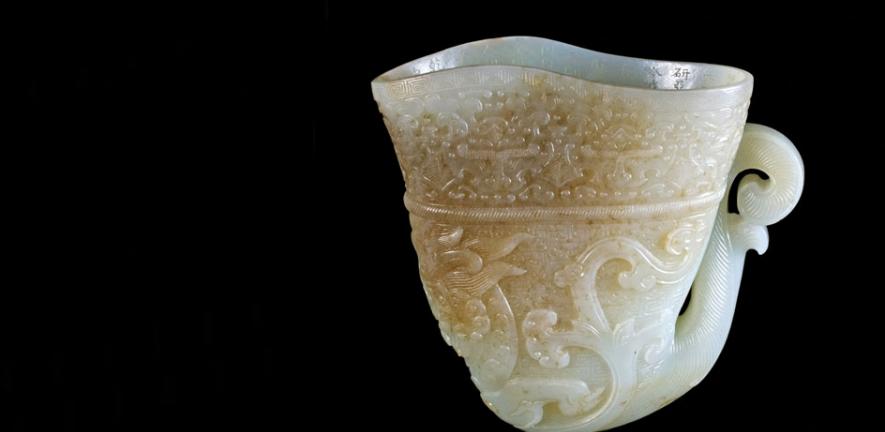
Treasured and venerated for thousands of years, jade holds a special place in the history and culture of the Chinese Empire.
Treasured and venerated for thousands of years, jade holds a special place in the history and culture of the Chinese Empire.
Jade has been regarded historically as possessing mystical powers to ward off evil, and was considered by many as a metaphor for longevity, wisdom and purity.
China is unique in the degree to which it has assimilated jade into its rituals, its religion and its art. Jade has been regarded historically as possessing mystical powers to ward off evil, and was considered by many as a metaphor for longevity, wisdom and purity. It is perhaps no surprise that the Mandarin character for jade, yu, symbolises the linking of heaven and earth.
The Fitzwilliam Museum houses about 200 jades and other hardstones covering almost the whole of Chinese history from the Neolithic to the 20th century. Dr James Lin, Assistant Keeper of Applied Art in the Museum, and affiliated to the University’s Faculty of Asian and Middle Eastern Studies, has been researching the history of the collection. With funding from the British Academy, Dr Lin has travelled to different parts of China to view excavations of ancient tombs and to discuss the Museum’s jade collection with curators and scholars.
By Royal appointment
Ownership of jade was a privilege of the richest members of society, particularly the Imperial family. The Museum collection includes several pieces that belonged to the Emperor Qianlong, who reigned AD 1736–1795, and was the fourth Qing Emperor to rule over the Manchu Empire. An art lover, collector and sponsor, his love of jade inspired him to compose thousands of poems about the stone.
After pacifying the rebels in Xinjiang province in 1758, the Qing court gained access to jade from Khotan. The jade was mined and carefully shipped to Beijing to be carved in the Imperial workshop. Qianlong often emphasised in his poems that jade should not be wasted on common craftsmen – only the most skilled practitioners, capable of amazing feats of beauty, should be allowed to fashion works of art from the jade. A typical example in the collection is a horn-shaped drinking cup known as a rhyton. Dr Lin’s research has found an imperial document recording that it was presented to Qianlong for approval in 1787 and that he ordered a poem, still visible today, to be incised around its inner edge.
The lost poem
As well as being used to create trinkets and gifts, jade was used in death for ritual objects buried in tombs. Excavation of tombs from the Han dynasty (BC 206–AD 220) has uncovered superb jade suits used to encase the bodies of Imperial family members. One such object held in the collection – a jade disc used to cover the body of a high-ranking individual – has yielded a fascinating history. Dr Lin recently discovered a poem incised along its rim. Because of the greyish-green, brown-speckled colouring of the disc, and the tiny edge along which it was inscribed, the poem had long been missed, perhaps for centuries. But rather than the poem being an original inscription, research showed that this was yet another example of Qianlong’s love of artistry in jade: he believed that this disc was used as a ritual object to sacrifice to the deities and added the poem in 1769, after it became part of his collection.
This discovery is all the more compelling for its demonstration that objects may lose their original function and meaning once they have lost their original context. As the rest of the collection is catalogued, further remarkable stories of jade in China are sure to unfold.
For more information, please contact the author Dr James Lin (jcsl3@cam.ac.uk) at The Fitzwilliam Museum.
This work is licensed under a Creative Commons Licence. If you use this content on your site please link back to this page.





